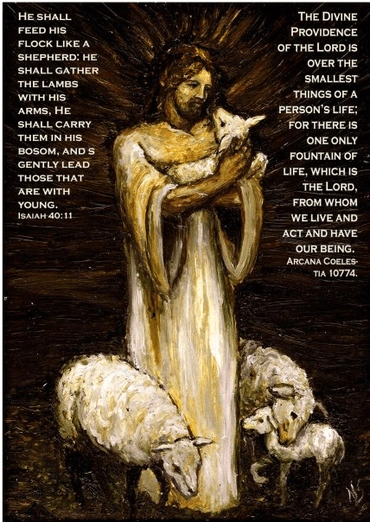4580. 'Jacob set up a pillar in the place where He talked to him, a stone pillar' means the holiness of truth within that Divine state. This is clear from the meaning of 'a pillar' as the holiness of truth, dealt with below, and from the meaning of 'in the place where He talked to him' as within that state, dealt with just above in 4578.
First, let something be said about the origin of erecting pillars in those times, of pouring out drink-offerings onto them, and of pouring wine onto them.
[2] The pillars which were erected in ancient times were set up to serve either as a sign, or as a witness, or for worship. Those set up for worship used to be anointed with oil and were thereby made holy; and in these places, people also held their worship - in temples, in groves, under trees in forests, and in other places. This practice of erecting pillars owed its representative nature to the fact that in most ancient times stones were set up on the boundaries between families of nations, to stop them crossing those boundaries to do one another any harm, as with the pillar set up by Laban and Jacob, Genesis 31:51. Not crossing them to do harm was the law of nations among those people. And because those stones were on the boundaries, whenever the most ancient people saw them as boundary stones they thought of the truths which exist in the ultimate degree of order; for those people saw in every object on earth the spiritual or celestial reality to which it corresponded. Their descendants however, who saw less of what was spiritual and celestial within the same objects and more of what was worldly, began to regard these in a holy way merely because they were objects venerated from of old. At length those descendants of the most ancient people who lived immediately before the Flood, and who no longer saw anything spiritual or celestial in earthly and worldly things as objects, began to make the actual stones holy, pouring out drink-offerings onto them and anointing them with oil. These were now called pillars and were used for worship. The position remained the same after the Flood - in the Ancient Church which was a representative Church - though with this difference, that pillars served these people as a means enabling them to offer internal worship. For infants and children were taught by parents what those pillars represented, and in this way they were led to know holy objects and to have an affection for the things which these represented. This explains why the ancients had pillars for worship in their temples, groves, and forests, also on hills and mountains.
[3] But once the internal existence of worship had perished completely in the Ancient Church and people began to regard external objects as being holy and Divine and in so doing began to worship those objects in an idolatrous manner, they erected pillars to particular deities. And because the descendants of Jacob were very inclined towards idolatrous practices, they were forbidden to erect pillars or have groves. They were not even allowed to offer any worship on mountains or hillsides, but were required to meet in one particular place - where the Ark was, and later on where the Temple stood, thus in Jerusalem. Otherwise each family would have had its own external objects and idols which it would have worshipped, and so no representative of the Church could have been established among that nation. See what has been shown already about pillars in 3727.
From all this one may see how the erecting of pillars originated, and what they were signs of, and that when they were used for worship, holy truth was represented by them, for which reason the expression 'a stone pillar' is also used, 'stone' meaning truth in the ultimate degree of order, 1298, 3720, 3769, 3771, 3773, 3789, 3798. It should be recognized in addition that holiness is a particular attribute of Divine Truth, for Divine Good exists within the Lord, while Divine Truth proceeds from that Good, 3704, 4577, and is called holiness.







